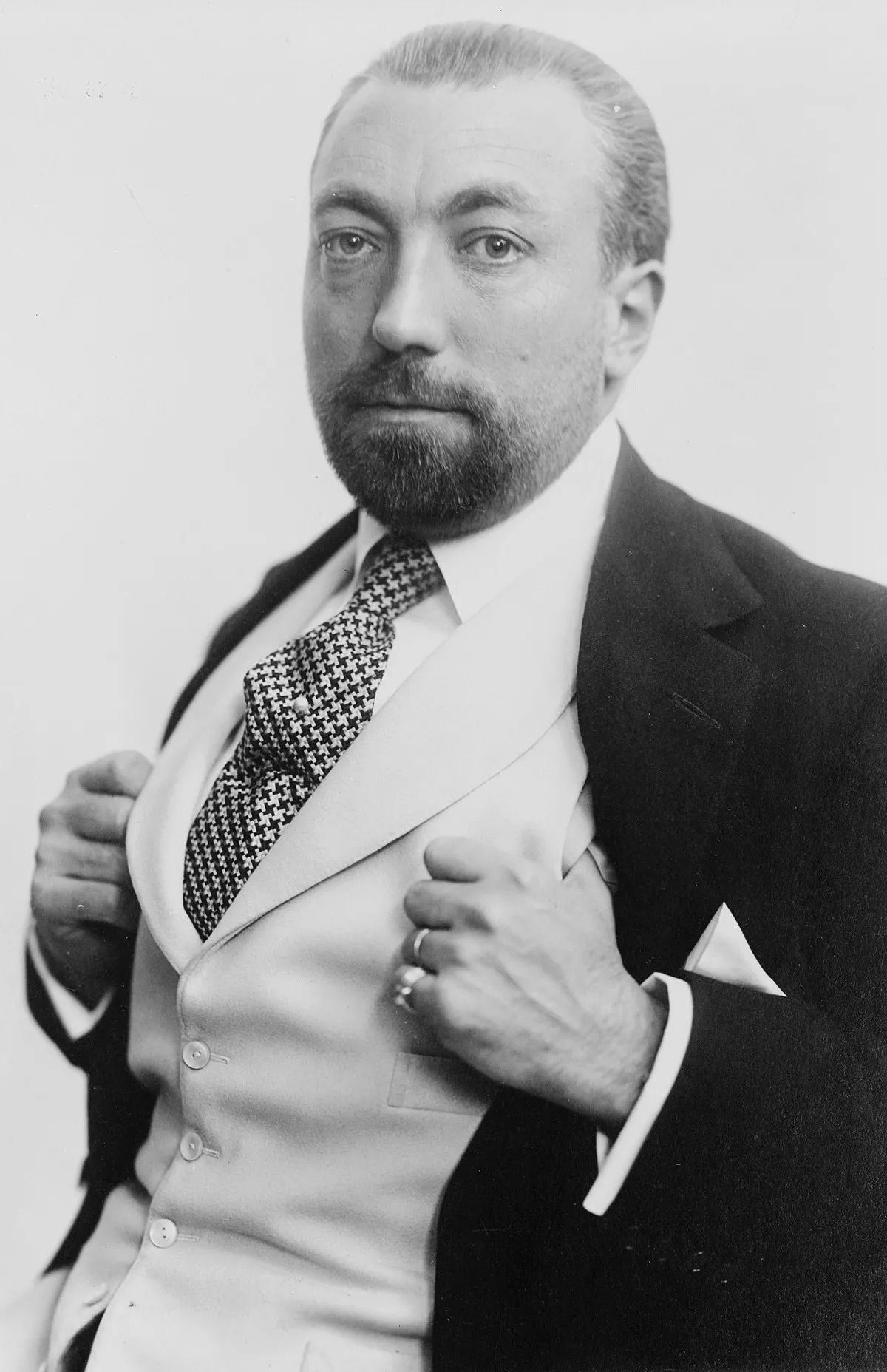 1.
1. Paul Poiret was a French fashion designer, a master couturier during the first two decades of the 20th century.

 1.
1. Paul Poiret was a French fashion designer, a master couturier during the first two decades of the 20th century.
Paul Poiret was the founder of his namesake haute couture house.
Paul Poiret continued to sell his drawings to major Parisian couture houses, until he was hired by Jacques Doucet in 1898.
Paul Poiret became famous after designing a black mantle of tulle over a black taffeta, painted by the famous fan painter Billotey.
In 1901, Paul Poiret moved to the House of Worth, where he was responsible for designing simple, practical dresses, called "fried potatoes" by Gaston Worth because they were considered side dishes to Worth's main course of "truffles".
Paul Poiret made his name with his controversial kimono coat and similar, loose-fitting designs created specifically for an uncorseted, slim figure.
Paul Poiret designed flamboyant window displays and threw sensational parties to draw attention to his work.
Jeanne Margaine-Lacroix presented wide-legged trousers for women in 1910, some months before Paul Poiret, who took credit for being the first to introduce the style.
In 1911 Paul Poiret unveiled "Parfums de Rosine" with a flamboyant soiree held at his palatial home, attended by the cream of Parisian society and the artistic world.
Paul Poiret fancifully christened the event "la mille et deuxieme nuit", inspired by the fantasy of a sultan's harem.
Paul Poiret's gardens were illuminated by lanterns, set with tents, and live, tropical birds.
In 1911, Paul Poiret launched the Les Parfums de Rosine, a home perfume division, named for his first daughter.
Also in 1911, Paul Poiret launched the Les Ecole Martine, a home decor division of his design house, named for his second daughter.
In 1911 Paul Poiret leased part of the property at 109 Rue du Faubourg Saint Honore to his friend Henri Barbazanges, who opened the Galerie Barbazanges to exhibit contemporary art.
Paul Poiret reserved the right to hold two exhibitions each year.
Paul Poiret arranged concerts of new music at the gallery, often in combination with exhibitions of new art.
Early in World War I, Paul Poiret left his fashion house to serve the military.
Paul Poiret took his top designer and an entourage with him, enjoying the elegant life at sea.
Back in Paris, Paul Poiret was increasingly unpopular, in debt, and lacking support from his business partners.
Paul Poiret soon left the fashion empire he had established.
When Paul Poiret died in 1944, his genius had been forgotten.
Paul Poiret was influenced by both antique and regional dress, and favoured clothing cut along straight lines and decorated with rectangular motifs.
Paul Poiret is often described as an Orientalist, and his creations often drew inspiration from various Eastern styles which were at odds with other fashionable Edwardian modes.
Denise Poiret's personal sartorial collection broke sales records: in particular, an auto coat that Paul Poiret had designed for her in 1914 went under the hammer for 110,000 Euros.
In 2011, this show traveled to the Kremlin in Russia to celebrate the hundredth anniversary of Paul Poiret's visit to Moscow and Saint Petersburg.
In 1905, Paul Poiret married Denise Boulet, a provincial girl; they would later have five children together.